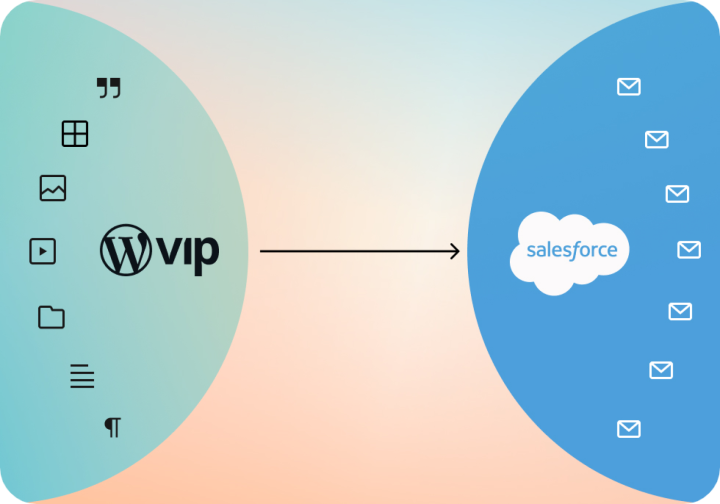WordPress vs Contentful : Total Cost of Ownership
When it comes to choosing a CMS, the upfront licensing fee is just one part of the equation. The real cost reveals itself over time, in development hours, integration overhead, scalability, maintenance, and team training.
Let’s break down what the Total Cost of Ownership (TCO) looks like when comparing Contentful vs WordPress in an enterprise environment.
Upfront investments
Let’s talk about Contentful first.
Contentful is a proprietary hosted solution using a subscription-based pricing model, with tiered plans that scale based on API usage, content types, and user roles. While this model provides predictable costs, expenses can increase significantly as the volume of content and API calls grows.
For enterprise businesses looking at Contentful as their content management system, only the Premium pricing plan will make sense. This plan is designed for businesses with more complex requirements and higher resource demands. It includes all of Contentful’s features, with customizable options based on usage factors like the number of users, API calls, and storage.
Additionally, Contentful would need a developer-intensive setup depending on your scale of implementation, which can add to the overall cost (especially for custom development and integrations).
For example, as a B2B business, you’ll likely need integrations with marketing platforms like Salesforce Marketing Cloud for your CMS. However, Contentful doesn’t offer native integrations with such platforms. To bridge this gap, you’ll need to rely on external integration services like integrate.io, Stitch, or Panoply. While these solutions could provide the required connectivity and functionality, they also introduce additional costs that can be significant depending on your integration needs and the complexity of your workflows. Not to forget the costs associated with the development.
When it comes to the upfront costs, you save significantly with WordPress, as WordPress is open source and free. So there’s no licensing fee. That said, you can go with managed enterprise hosting solutions (like WordPress VIP, Pantheon, or Pagely) which come with annual contracts.
In general, a headless or hybrid WordPress setup will be more cost-effective, especially for organizations already familiar with WordPress. Teams accustomed to working with WordPress can quickly adapt to a headless or hybrid setup, leveraging their existing knowledge of plugins, themes, and content management workflows. The ubiquitousness of WordPress significantly reduces training and onboarding costs too, across all stakeholders (content teams, developers, and IT teams).
Unlike Contentful, WordPress’s vast ecosystem means it’s easy to find ready-made solutions for many requirements, avoiding the need for custom development or custom-built integrations. This ease of adaptation and availability of resources results in a quicker, more affordable start compared to proprietary systems like Contentful. For example, with WordPress, especially with enterprise hosting solutions like WordPress VIP, you often get native integrations with all major business platforms (Salesforce Marketing Cloud, for example). Such native integrations in WordPress lead to significant savings on custom coding and lowers the Total Cost of Ownership (TCO) in the long term.
(By the way, we worked on this integration. Read the full story here.)

Maintenance
As a fully managed SaaS platform, Contentful simplifies maintenance by handling updates, security patches, and scalability. But that also means that you’ll depend on Contentful’s ecosystem entirely, which leads to vendor lock-in and escalates costs as usage grows. Additionally, you need to monitor API consumption closely, as exceeding usage limits can result in significant overage fees.
In contrast, if you opt with WordPress’s self-hosted option, while you’ll have to handle all of these, but the platform’s widespread familiarity means internal teams or readily available third-party vendors can help. These also reduce your dependency on specialized providers. Using a managed WordPress hosting provider, on the other hand, further helps with some of the operational burdens, offering automatic updates and enhanced security. And all of this while still being more cost-effective than Contentful.
Organizations already using WordPress also benefit from established processes for maintaining plugins, themes, and core updates. This reduces the overhead of learning new systems or developing maintenance workflows from scratch, making the overall cost and effort lower compared to a system like Contentful. With Contentful, however, you’ll be looking at significant training costs.
In all, while Contentful’s SaaS model minimizes maintenance overhead, it increases dependency on the platform. WordPress, on the other hand, offers greater control but requires more hands-on management. However, its familiarity within teams helps work these out, resulting in lower ongoing costs.
Operational expenses
When it comes to Contentful’s operational expenses, API consumption is a key factor. Charges scale with API requests, asset storage, and bandwidth usage, which can quickly increase for high-traffic enterprise sites. Contentful’s pricing model may also require careful monitoring to avoid unexpected costs.
WordPress’s operational costs depend on hosting plans, CDN usage, and API requests for headless configurations. But as noted above, the platform’s familiarity within enterprise environments often leads to more efficient operations, as teams can rely on existing knowledge and tools to optimize resource usage. For example, caching strategies, effective use of CDNs, and optimized API queries can significantly reduce costs in a headless setup.
Additionally, WordPress provides flexibility in selecting hosting providers and services, allowing enterprises to negotiate pricing or choose cost-effective options tailored to their needs. This contrasts with Contentful’s fixed pricing tiers, which can escalate quickly as usage grows.
In general, Contentful tends to have higher operational expenses due to its API-first pricing model, while WordPress offers more opportunities to optimize costs. The familiarity of WordPress further saves on training expenses across all stakeholders.
While we’re talking about TCO, let’s talk about the costs of scaling as well.
Costs for scaling
Scalability is one of Contentful’s strong suits. Its infrastructure can handle large-scale operations without requiring additional effort from enterprises. However, scalability comes with higher costs, as API usage increases significantly with the volume of content requests, edits, and end-user interactions. These costs can grow significantly, making it challenging to budget for long-term scalability needs.
WordPress also scales well but demands more active management. However, managed enterprise hosting providers make this quite effortless by offering end-to-end management. Also, while hosting and resource costs rise with increased usage, they are often more predictable compared to Contentful’s tiered API consumption pricing.
Moreover, WordPress’s familiarity among teams enables enterprises to optimize for scalability without requiring external expertise, talent is usually already available in-house. Teams likely already know how to implement caching, integrate and optimize CDNs, and optimize database operations to ensure smooth performance as usage grows (even at the enterprise scale). This hands-on approach often results in cost savings while maintaining control over scalability strategies.
In all, Contentful provides effortless scalability at a premium cost, whereas WordPress allows for scalable solutions with more predictability and control over expenses, leveraging the team’s familiarity to reduce overhead.
The final perspective on TCO
For enterprises evaluating Contentful and headless/hybrid WordPress from a TCO perspective, the decision often comes down to priorities. Contentful is a proven headless CMS, but it comes with steep contracts, development and integration costs, potential vendor lock-in, and training expenses.
On the other hand, headless or hybrid WordPress provides unparalleled control, cost efficiency, and adaptability. Its widespread familiarity within enterprise teams reduces the cost of training and ensures smoother operations across all stages, from getting started to maintenance, scalability, and beyond.
Ultimately, understanding API consumption patterns, leveraging existing team expertise, and planning for long-term scalability are critical to minimizing TCO while ensuring the CMS meets enterprise requirements.







